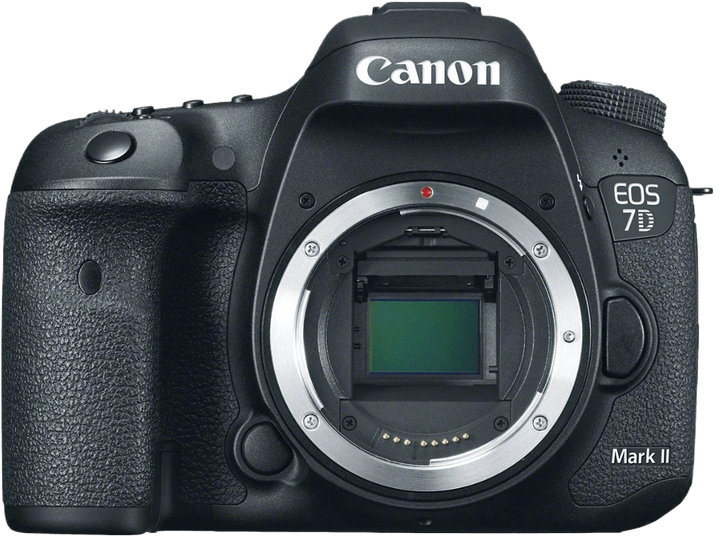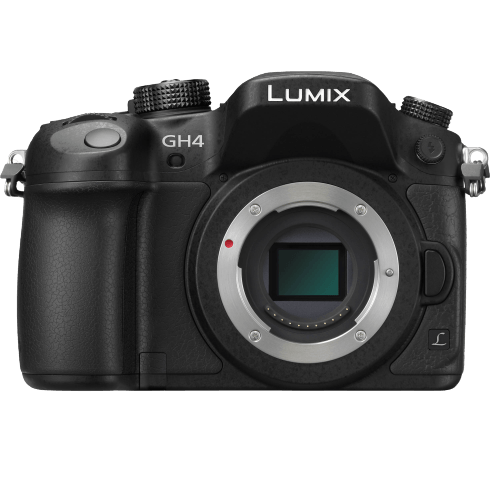Canon EOS 7D Mark II vs Panasonic Lumix DMC-GH4 Comparison
Canon EOS 7D Mark II

Panasonic Lumix DMC-GH4

The Canon EOS 7D Mark II edges out the Panasonic Lumix DMC-GH4 with a score of 60/100 to 58/100. Both cameras were released in 2014, with the Canon having a launch price of $1800 and the Panasonic at $1700. They share similarities in announcement and release dates.
The Canon 7D Mark II, a DSLR, boasts a larger size (149 x 112 x 78mm) and heavier weight (910g) compared to the Panasonic GH4, a mirrorless camera, which measures 133 x 93 x 84mm and weighs 560g. The Canon’s bigger size and weight may provide a more stable shooting experience.
On the other hand, the Panasonic GH4’s compact size and lighter weight make it more portable and easier to handle for extended periods. This is an advantage for those prioritizing mobility.
Comparing both cameras, the Canon EOS 7D Mark II offers more stability, while the Panasonic Lumix DMC-GH4 provides better portability.
Canon EOS 7D Mark II vs Panasonic Lumix DMC-GH4 Overview and Optics
The Canon EOS 7D Mark II outperforms the Panasonic Lumix DMC-GH4 in optics, scoring 61/100 compared to the GH4’s 52/100. Both cameras share some common specifications, including a CMOS sensor type, absence of image stabilization, and similar processors – the 7D Mark II with Dual Digic 6 and the GH4 with Venus Engine IX.
The 7D Mark II boasts a higher megapixel count at 20.2, compared to the GH4’s 16, which allows for better image resolution and detail. Furthermore, the 7D Mark II has an APS-C sensor size, which is larger than the GH4’s Micro Four Thirds sensor. This difference in sensor size results in improved low-light performance and a shallower depth of field for the 7D Mark II. The Canon EF-S lens mount is also compatible with a wide range of high-quality lenses, offering more versatility for various shooting situations.
On the other hand, the GH4 has a faster shooting speed at 12 frames per second, compared to the 7D Mark II’s 10. This can be beneficial for capturing fast-moving subjects or action scenes. Additionally, the GH4 has a slightly higher DXOMARK score for its sensor at 74, compared to the 7D Mark II’s 70, indicating better overall image quality.
Taking these factors into consideration, the Canon EOS 7D Mark II emerges as the stronger camera in terms of optics, with a higher megapixel count, larger sensor size, and versatile lens compatibility. However, the Panasonic Lumix DMC-GH4 still has its advantages, particularly in shooting speed and a marginally better DXOMARK sensor score.
Canon EOS 7D Mark II vs Panasonic Lumix DMC-GH4 Video Performance
The Panasonic Lumix DMC-GH4 emerges as the winner in video capabilities, with a score of 70/100 as opposed to the Canon EOS 7D Mark II’s score of 56/100. Both cameras share certain video specifications, such as Full HD video resolution and a maximum frame rate of 60fps for the Canon and 24fps for the Panasonic. However, the GH4 offers more advanced video features that contribute to its higher score.
One significant advantage of the GH4 over the 7D Mark II is its ability to record 4K video with a maximum video dimension of 4096 x 2160. This allows for higher quality and more detailed footage compared to the 7D Mark II’s Full HD video resolution of 1920 x 1080. Additionally, the GH4 has time-lapse functionality built in, providing more creative options for videographers.
On the other hand, the Canon EOS 7D Mark II has a higher maximum video frame rate of 60fps, compared to the GH4’s 24fps. This enables smoother slow-motion footage and may be preferred by some users. However, this advantage is not enough to outweigh the benefits offered by the GH4’s 4K resolution and time-lapse capabilities.
To conclude, the Panasonic Lumix DMC-GH4 boasts superior video capabilities due to its 4K resolution and built-in time-lapse functionality, earning it a higher score in this category. While the Canon EOS 7D Mark II offers a higher maximum video frame rate, this feature is not enough to surpass the advantages provided by the GH4.
Canon EOS 7D Mark II vs Panasonic Lumix DMC-GH4 Features and Benefits
The Panasonic Lumix DMC-GH4 emerges as the winner with a feature score of 70/100, while the Canon EOS 7D Mark II scores 57/100. Both cameras have 3-inch screens, similar screen resolutions (1,036,000 dots for the GH4 and 1,040,000 dots for the 7D Mark II), GPS, WiFi, and no Bluetooth.
The GH4 outperforms the 7D Mark II with its touchscreen and flip screen features. The touchscreen allows for easier navigation and control, while the flip screen provides flexibility when shooting from different angles or taking selfies. These features make the GH4 more user-friendly and versatile.
On the other hand, the 7D Mark II has GPS, which the GH4 lacks. This feature enables geotagging, allowing users to track and organize their photos based on location. However, this advantage is not significant enough to outweigh the GH4’s superior features.
When comparing the two cameras, the Panasonic Lumix DMC-GH4’s higher feature score reflects its better overall performance. The touchscreen and flip screen contribute to its user-friendliness and versatility, making it the preferred choice for many photographers. The Canon EOS 7D Mark II’s GPS feature offers a slight advantage in photo organization, but it is not enough to compete with the GH4’s strengths. Consequently, the GH4 remains the superior choice in terms of features.
Canon EOS 7D Mark II vs Panasonic Lumix DMC-GH4 Storage and Battery
The Canon EOS 7D Mark II wins the storage and battery comparison with a score of 65/100, while the Panasonic Lumix DMC-GH4 scores 60/100. Both cameras have two memory card slots and accept SD, SDHC, and SDXC cards. The 7D Mark II stands out with its additional support for Compact Flash cards, providing users with more storage options.
Regarding battery life, the 7D Mark II offers 670 shots per charge, which is superior to the GH4’s 500 shots. The 7D Mark II uses an LP-E6N battery, while the GH4 uses a DMW-BLF19 battery. Neither camera supports USB charging.
Despite the lower score, the GH4 still provides a decent battery life and storage capacity for most users. However, the 7D Mark II is the better option for those seeking longer battery life and more storage flexibility. Both cameras lack USB charging, which could be a disadvantage for some users.
Canon EOS 7D Mark II vs Panasonic Lumix DMC-GH4 – Our Verdict
Are you still undecided about which camera is right for you? Have a look at these popular comparisons that feature the Canon EOS 7D Mark II or the Panasonic Lumix DMC-GH4:

